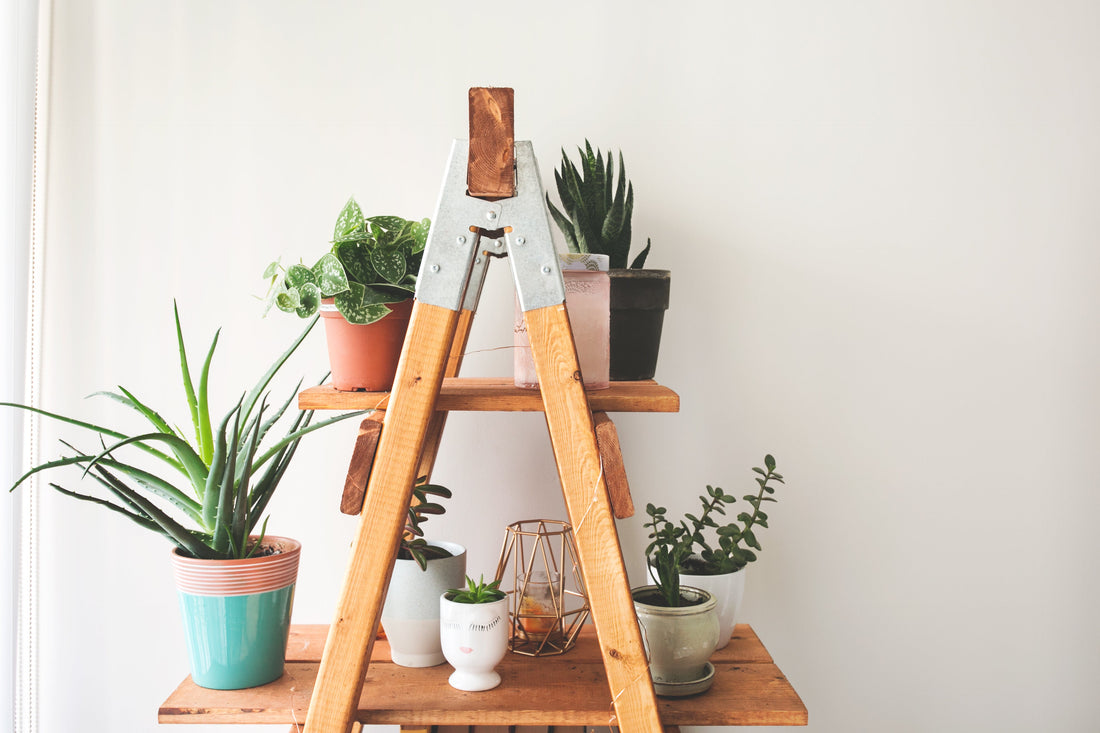
Updating a Mannequin on a Budget with DIY Paint
Share

A good friend of mine came across this mannequin top in a thrift store for $20. It was exactly what I had been looking for! While I originally wanted a mannequin for a Christmas project, since it is currently February, I thought I better find another use for it until that time.
The first thing I did was remove the cloth cover to wash it. (Even though it didn’t look too dirty, the amount of dirt that was in that water told another story.) Before I washed it, I traced it onto some pattern paper I had found at a yard sale just in case I wanted to (or had to, if I ruined it by washing it) make a replacement cover. All is well, though, and handwashing the cover did it no harm.
What I discovered when I removed the cover was that the foam was disintegrating significantly (see photo). I then knew I would have to seal it in order to get the cover back onto the mannequin (and especially if I wanted to be able to change the cover seasonally).

Rather than using a clear sealer (like DIY Big Top or Crystal Clear Chandelier Liquid Patina, which was my original intention), I decided to use a white paint with a built-in sealer (DIY Cottage Color in White Linen). This way, not only would the foam be sealed, but I would also have the option of covering it with decoupage paper if I decided to do that in the future. (Decoupage paper shows best when applied over a light surface.)
After one coat of White Linen, I could see that it was going to require multiple coats to get full coverage and to ensure that the foam would not disintegrate further. I applied two full coats and a third coat just in those spots that were in particularly bad shape.

While the white paint/sealer was drying, I searched my home for something to use as a base for the mannequin. I discovered several potential candidates: a three-legged wood stand from a little round table I had disassembled a while back to make a wall clock; my husband’s coat rack (he didn’t want me to use that since he was currently using it, which is fair); a wooden closet dowel rod, which was really nice but I couldn’t figure out how to securely attach a 1.25” diameter dowel to a 5/8” diameter hollow metal pole, which is what I was working with inside the foam mannequin (see photo at right).
stand from a little round table I had disassembled a while back to make a wall clock; my husband’s coat rack (he didn’t want me to use that since he was currently using it, which is fair); a wooden closet dowel rod, which was really nice but I couldn’t figure out how to securely attach a 1.25” diameter dowel to a 5/8” diameter hollow metal pole, which is what I was working with inside the foam mannequin (see photo at right).
I finally found something that was just perfect in my basement (after multiple unfruitful trips to that same basement): the inexpensive and somewhat unattractive lamp my daughter used in her college dorm 10+ years ago. The color was certainly not right, but the pole was exactly 5/8” in diameter and it had a heavy base so I was on my way!
I unscrewed the hollow pole of the lamp where it connected to the top portion containing the lights, cut the electric cord (Note: the light was NOT plugged in … this is a critical detail) and removed the wire from inside the pole. I discarded the top portion, being sure to keep any parts that I could reuse or repurpose in the future (e.g., light bulbs, light fixture parts, the little knob that turns the light switch on, and anything that looked like it might be decorative or useful). I tested the fit of the mannequin on top of the lamp pole and it was perfect … not just in diameter but also in height! I was very thankful and felt my job had just gotten easier!

The next step was to paint the base and pole. In light of the simple design of the lamp base, I chose a simple gold and ivory design (gold for the base/pole/finial and ivory for the mannequin top).
Since the base and pole were made up of plastic (the base) and metal (the pole) and were both shiny, I used DIY Clay Paint in Firestarter as a primer. DIY Clay Paint is all natural, has only nine ingredients and is very heavily pigmented. The clay-based paint sticks to nearly any surface. I chose Firestarter (the orange color) since I was ultimately going to finish the piece with DIY Golden Ticket, a gold liquid patina. The warm tone of the clay paint helps provide more complete coverage when adding the gold patina. I allowed the paint to dry thoroughly between coats.

We live near the Martin Guitar Headquarters so periodically I come across guitar “parts” while visiting local yard sales. They always catch my eye because my husband is an amazing guitar player and he really likes (and plays) Martin guitars. The reason I’m even mentioning this is that I used a circle cut-out from the front of a Martin guitar for part of my finial on top of the mannequin. The top of the finial was cut from a table leg (my parents' former dining room table) and attached to the wood round using a screw. A cylindrical part from the lamp was painted, glued to the bottom of the wood round, and is used to keep the finial in place.


 I replaced the freshly washed cover back onto the mannequin and added straight pins to secure it in place. NOTE: This brings up a crucial difference when selecting your mannequin to upcycle. Some are made of plastic rather than foam; you will not be able to use straight pins on plastic mannequins. I always look for foam mannequins because the ability to use straight pins means it will be easier to make future changes to the look of the mannequin by simply changing its cover. A photo of the top of the mannequin with the straight pins inserted to hold the fabric in place is shown. The pins will not be seen once the finial is secured to the top.
I replaced the freshly washed cover back onto the mannequin and added straight pins to secure it in place. NOTE: This brings up a crucial difference when selecting your mannequin to upcycle. Some are made of plastic rather than foam; you will not be able to use straight pins on plastic mannequins. I always look for foam mannequins because the ability to use straight pins means it will be easier to make future changes to the look of the mannequin by simply changing its cover. A photo of the top of the mannequin with the straight pins inserted to hold the fabric in place is shown. The pins will not be seen once the finial is secured to the top.
And here is a picture of the finished mannequin! Since I had the DIY Paint products, as well as the lamp and some small wooden parts on hand, the cost of this project was limited to just the cost of the thrifted mannequin top … $20.

I hope you give this project a try and let me know how you make out!
